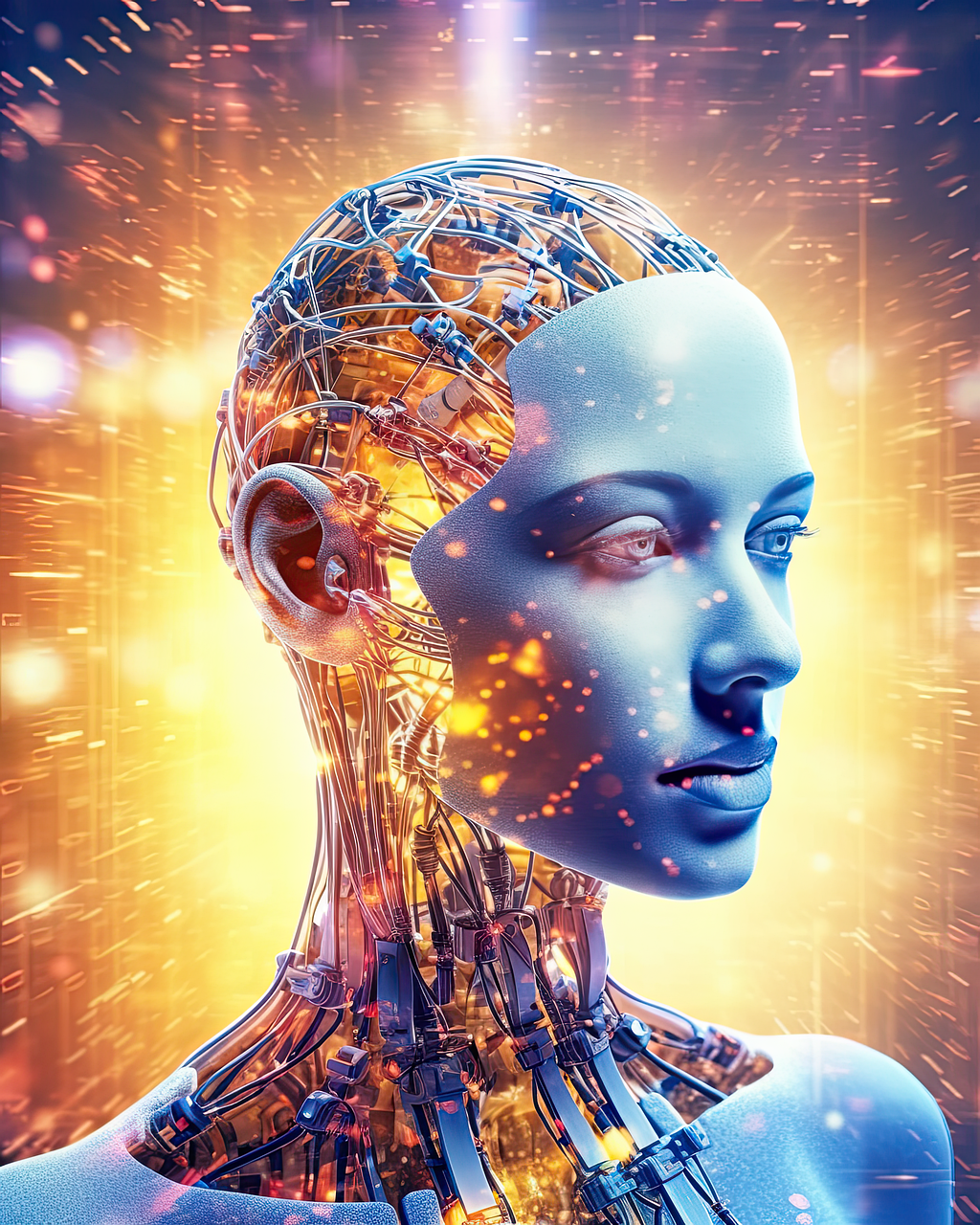The Transformative Power of Machine Learning: Revolutionizing Industries, Advancing Technology, and Shaping the Future of Humanity
Machine learning (ML), a branch of artificial intelligence (AI), has emerged as one of the most transformative technologies in the modern world. By enabling systems to learn from data and improve over time without explicit programming, machine learning has the potential to revolutionize industries, enhance decision-making processes, and create new opportunities across various sectors. In this essay, we will explore the fundamental principles of machine learning, its applications, challenges, and the ways it is reshaping the future of humanity.

Understanding Machine Learning
At its core, machine learning is about training algorithms to recognize patterns and make predictions or decisions based on input data. Unlike traditional programming, where every step is explicitly coded, machine learning allows systems to "learn" from examples, making it possible to solve complex problems that would otherwise be difficult to program manually.
Machine learning algorithms are typically categorized into three types:
Supervised Learning: In supervised learning, the algorithm is trained on a labeled dataset, where both the input and the corresponding correct output are provided. The goal is for the model to learn the relationship between inputs and outputs, enabling it to make predictions on new, unseen data. This type of learning is commonly used for tasks like image classification, spam detection, and speech recognition.
Unsupervised Learning: Unsupervised learning, on the other hand, deals with datasets that have no labels. The algorithm must find hidden patterns or structures in the data, such as grouping similar items together in clustering problems or reducing the dimensionality of the data in problems like principal component analysis (PCA).
Reinforcement Learning: Reinforcement learning involves training an agent to make decisions by interacting with an environment. The agent receives rewards or penalties based on its actions and uses this feedback to improve its performance over time. This type of learning is often used in robotics, gaming, and autonomous systems.
Key Applications of Machine Learning
The applications of machine learning are vast and far-reaching, influencing nearly every industry. Some of the most prominent use cases include:
Healthcare: In the healthcare industry, machine learning is transforming how diseases are diagnosed, treated, and managed. Algorithms can analyze medical images, predict patient outcomes, and even suggest personalized treatment plans. ML is also being used in drug discovery and genomics, where it can help identify new potential drugs or analyze genetic data to better understand diseases.
Finance: The finance industry uses machine learning for fraud detection, algorithmic trading, credit scoring, and risk assessment. Machine learning models can analyze vast amounts of financial data in real-time, enabling quicker and more accurate decision-making processes.
Transportation: Self-driving cars, a prime example of ML in action, use deep learning algorithms to analyze sensor data and make real-time driving decisions. Machine learning is also used in route optimization, predictive maintenance of vehicles, and improving traffic management systems.
Retail and E-commerce: Retailers and e-commerce platforms use machine learning for personalized product recommendations, inventory management, dynamic pricing, and customer sentiment analysis. Machine learning algorithms process user behavior data to provide a more personalized and engaging shopping experience.
Natural Language Processing (NLP): NLP, a subfield of machine learning, enables machines to understand, interpret, and generate human language. Applications include chatbots, language translation, sentiment analysis, and voice assistants like Siri and Alexa, which use machine learning algorithms to improve their accuracy and efficiency over time.
Challenges in Machine Learning
Despite its tremendous potential, machine learning faces several challenges: Data Quality and Quantity: Machine learning models require vast amounts of high-quality data to be effective. Obtaining clean, relevant, and properly labeled datasets can be time-consuming and expensive. In many cases, poor-quality data can lead to inaccurate or biased results, which is especially concerning when ML is used for critical applications like healthcare or law enforcement. Model Interpretability: Many machine learning models, particularly deep learning models, function as "black boxes," meaning that it can be difficult to understand how they arrive at specific decisions. This lack of transparency can be problematic in areas where trust and accountability are essential, such as medical diagnoses or legal judgments. Ethical and Bias Concerns: Machine learning systems can inherit biases present in the data they are trained on. If the data reflects existing prejudices or inequalities, the model may perpetuate or even amplify these biases. This is especially concerning when ML models are used in high-stakes areas such as hiring, criminal justice, or lending, where biased decisions can have significant social consequences. Computational Power: Training complex machine learning models, especially deep learning networks, requires enormous computational resources, including powerful GPUs and large amounts of memory. This makes it challenging for smaller organizations or individuals to develop cutting-edge ML applications, as the infrastructure can be cost-prohibitive.
Conclusion
Machine learning is more than just a buzzword—it is a powerful technology that is already reshaping industries and impacting our daily lives. While challenges such as data quality, bias, and computational resources remain, the potential of machine learning to drive innovation and improve society is immense. As the technology continues to evolve, its ability to solve complex problems, make predictions, and automate tasks will only increase, leading to even greater advancements in various fields. Machine learning is not just shaping the future of technology; it is shaping the future of humanity itself.